Autumn anemones come in all colors from white to pink and red. We introduce you to the most beautiful autumn anemone varieties and tell you what to do when planting and caring for the Anemone hupehensis should note.
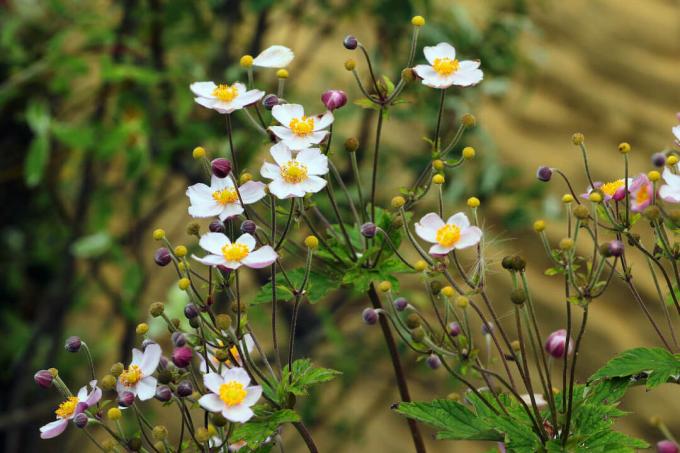
Among autumn anemones are often the species Anemone hupehensis, A japonica and A tomentosa summarized. While most perennials wither in late summer and autumn, the autumn anemone really gets going. This makes the perennial an eye-catcher in the autumn garden. We will show you which decorative varieties there are and how you can cultivate autumn anemones in your garden.
contents
- Autumn anemones: flowering time, origin and properties
- Are autumn anemones poisonous?
- Are autumn anemones hardy?
-
Autumn anemone varieties
- Anemone Japonica: The most beautiful varieties of the Japanese autumn anemone
- Autumn anemone varieties in white, pink and magenta
- Plant autumn anemones: location, time and Co.
- Autumn anemone care: Our tips
Autumn anemones: flowering time, origin and properties
The peculiarity of the autumn anemones is their flowering time. Early varieties show their flowers in July, but most varieties decorate your garden with filigree flowers until the end of October. The single to double flowers show up in a bright white to pink to a strong red.
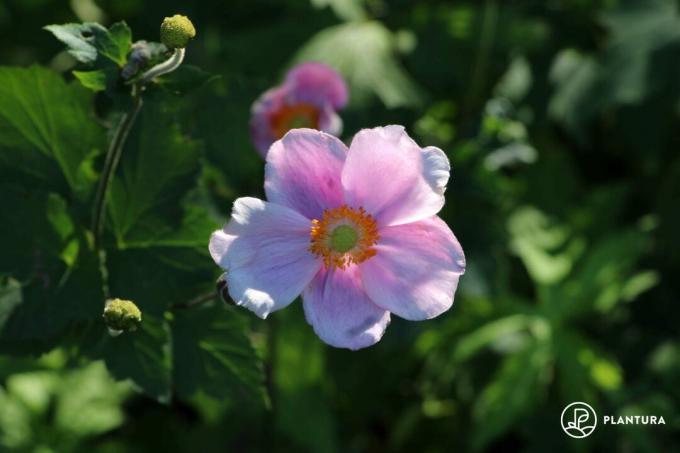
the kind Anemone hupehensis is originally native to China and Taiwan, while the species anemonejaponica mainly found in Japan. Many cultivars are hybrids of these species and are usually referred to as Anemone hupehensis designated. Already in the 19th The first autumn anemones came to Europe in the 19th century. Since then, they have enjoyed growing popularity and new cultivars are constantly being bred.
Depending on the type and variety, the inflorescences of the perennials are between 60 and 150 cm high. The leaves are slightly hairy and jagged. Autumn anemones are hardy and disease resistant, making them an easy-care addition to your garden. After about two years, the plant has become accustomed to its location and appears in all its glory. Autumn anemones not only reproduce through seeds, but above all through root suckers, so-called rhizomes. Therefore, they definitely play a dominant role in the bed.
tip: Autumn anemones are not only popular with many gardeners, but also with bees and other insects.
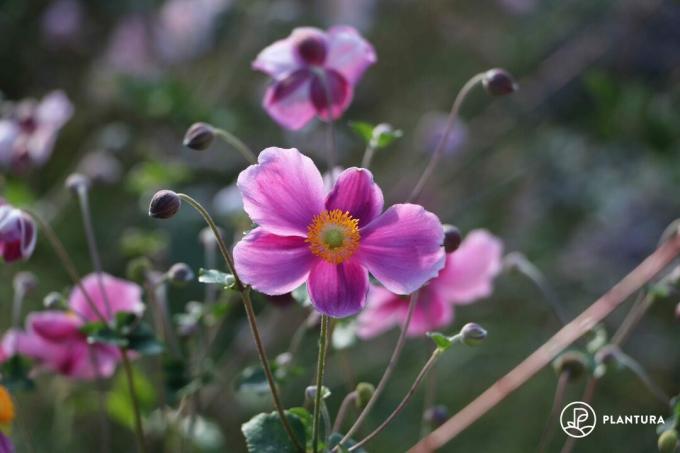
Are autumn anemones poisonous?
All plant parts of the autumn anemone are slightly poisonous by contact and ingestion. Therefore, when handling fresh autumn anemones, we recommend avoiding contact with skin. Consumption, especially by children or pets, must also be prevented, as the poison has a negative effect on the nervous system.
Are autumn anemones hardy?
Autumn anemones are completely hardy. In the first two years after planting, we recommend that you protect the perennials from wind and cold over the winter with a layer of leaves or brushwood. Planting in spring helps the autumn anemone to survive the first winter better. But once the plant is established, winter protection is no longer necessary.
Autumn anemone varieties
When choosing the right variety for your project, you should first consider whether you want to plant the autumn anemone in a bed with other perennials or whether you want to plant them individually. Autumn anemone varieties of the species Anemone tomentosa tolerate partial shade well, are much more robust and are therefore well suited as bed partners. The varieties of the species Anemone hupehensis prefer a single planting or at least plenty of room to stretch out. White autumn anemones have a reputation for being a little more demanding when it comes to caring for them than pink or red colored ones. We therefore recommend the colored varieties in particular for inexperienced perennial gardeners.
Anemone Japonica: The most beautiful varieties of the Japanese autumn anemone
ˈHonorine Jobertˈ
The white variety Anemone Japonica ˈHonorine Jobertˈ impresses with its strong flowering with semi-double flowers. The flowering period extends from August to October. The perennial shows a compact growth with inflorescences of a maximum height of 110 cm. The ˈHonorine Jobertˈ prefers an acidic soil. The variety is well suited as a planting partner in a bed or at the edge of a hedge. It tolerates partial shade very well.
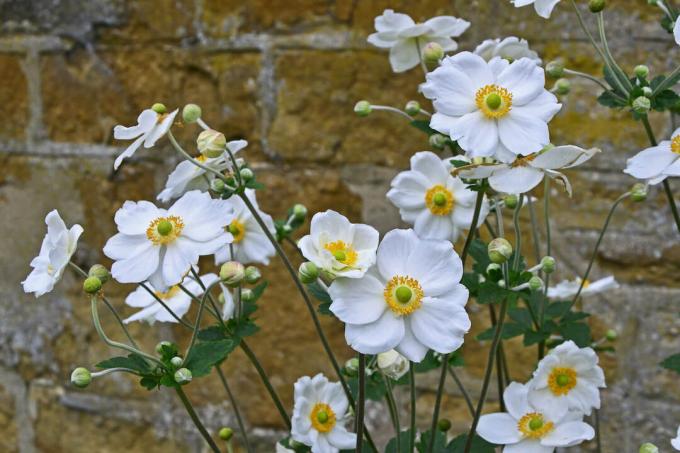
ˈPrince Heinrichˈ
the sort Anemone Japonica ˈPrinz Heinrichˈ shows strong magenta colored flowers from September to October. The flowers are semi-double and only reach a height of up to 80 cm, making 'Prinz Heinrich' a very compact variety. It does well in both full sun and partial shade.
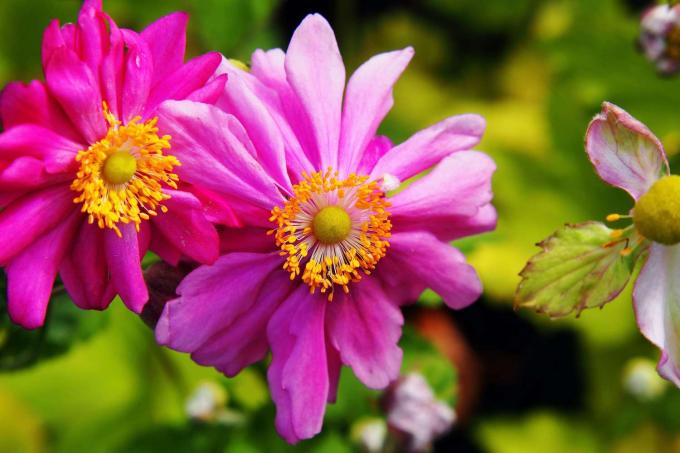
ˈQueen Charlotteˈ
The semi-double flowers of Anemone japonica ˈQueen Charlotteˈ stand out due to their pink coloring. The flowers can be admired in autumn from September to November, making this variety one of the latest autumn anemones. The overall growth can be classified as strong. The perennial prefers nutrient-rich, humus-rich soil.
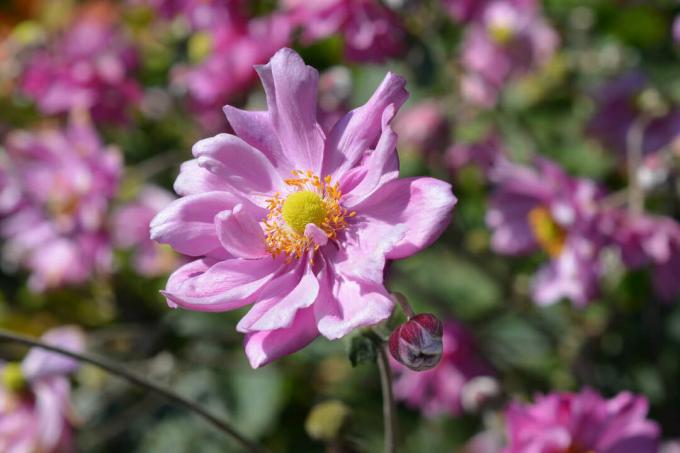
ˈAndrea Atkinsonˈ
Anemone japonica ˈAndrea Atkinsonˈ is a white-flowered autumn anemone. The flowering period extends from September to October. The inflorescences grow up to 120 cm high. ˈAndrea Atkinsonˈ prefers a partially shaded location with loose, humus-rich soil.
Autumn anemone varieties in white, pink and magenta
ˈwhirlwindˈ
The white-blooded hybrid 'Wirbelwind', also known under the English name 'Whirlwind', stands out due to its propeller-like twisted petals. Flowering begins in September and ends in late October. This variety prefers partial shade and even does well in shady locations. The growth is lush with a height of up to 120 cm.

ˈSeptember Charmˈ
The charming variety with pink flowers Anemone hupehensis ˈSeptember Charmeˈ shows a sprawling growth with a height of up to 80 cm. The flowers can be admired from August to October. The location should have acidic soil and little direct sunlight.
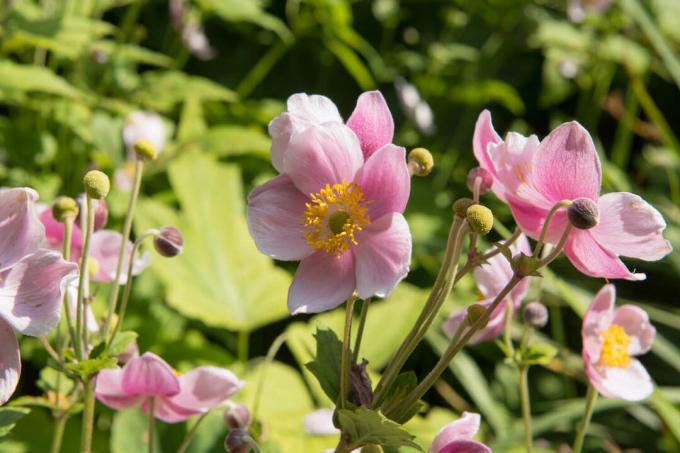
overture
Like the name Anemone hupehensis ˈOvertureˈ already suggests, the special feature of this variety is its early flowering from July. The flowers are pale pink, not double and can be admired until September. The inflorescences are up to 110 cm high. Overall, this variety is very expansive in growth. The pH of the soil should be in the neutral range and the location can be sunny to semi-shady.

serenade
the sort Anemone tomentosa ˈSerenadeˈ stands out due to its strong growth and a height of up to 150 cm. The semi-double flowers convince with a dark pink colour. A special feature of the flowers is their light fragrance, which most autumn anemone varieties do not have. The flowering period is from August to October. This variety is particularly undemanding and thrives in both sunny and partially shaded locations with slightly acidic to neutral soil.
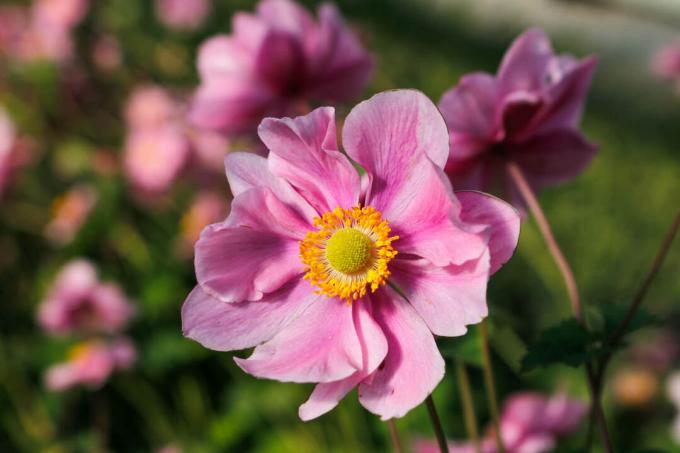
Plant autumn anemones: location, time and Co.
Most autumn anemone varieties thrive best in sunny to slightly shady locations. Direct sunlight promotes flowering. The varieties make slightly different demands on the soil in terms of pH. Most autumn anemones prefer neutral to slightly acidic, loose and humus-rich soil.
Spring is the best time to plant autumn anemones. During this time, the water supply is usually sufficient without further watering and the plant has enough time to establish itself until winter is just around the corner.
Since most strains exhibit spreading habit, we recommend choosing a spot where the plant can spread out. This property is enhanced by the rhizomes of the autumn anemone. Therefore, when planting, it is advisable to use a rhizome barrier, also known as a root barrier. To do this, dig a hole with a diameter of about 60 cm and place a plastic bucket or pot in this hole with the bottom cut off. The resulting ring should end about 2 cm above the surface of the earth. You can plant your autumn anemone in the middle. You can also attach a perennial ring so that the tall inflorescences do not fall over in heavy rain.
If you still want autumn anemones at another location after a few years, you can cut off part of the perennial in early spring and plant it elsewhere. This is an easy way to multiply your autumn anemones.
tip: Autumn anemones can be combined particularly well with perennials that bloom earlier in the year, such as avens (geum). Ornamental grasses also look very good next to autumn anemones.

Autumn anemone care: Our tips
The good news first: autumn anemones are extremely easy to care for. Diseases or pests are usually not a problem. For lush flowering, we recommend that you pay attention to a high humus content in the soil and a good supply of nutrients. With a mulch layer of leaves in autumn or other chopped clippings, you can enrich the soil with humus. A predominantly organic fertilizer with a long-lasting effect is ideal for fertilization. This enables an even supply of your autumn anemones with the necessary nutrients. Our primarily organic Plantura organic flower fertilizer promotes the flowering of your perennials with an optimal nutrient ratio. We advise you to supply the autumn anemones with our organic flower fertilizer in spring and summer.
Annual pruning is recommended in early spring, before the first new shoots appear. All above-ground shoots are removed just above the surface of the earth. A pruning in autumn is possible, but then you would cut off the decorative, woolly seeds of the autumn anemone.
A perennial bed is a real eye-catcher in every garden and impresses with many different flowers. As Fertilize perennials properly, we will show you in our special article.
